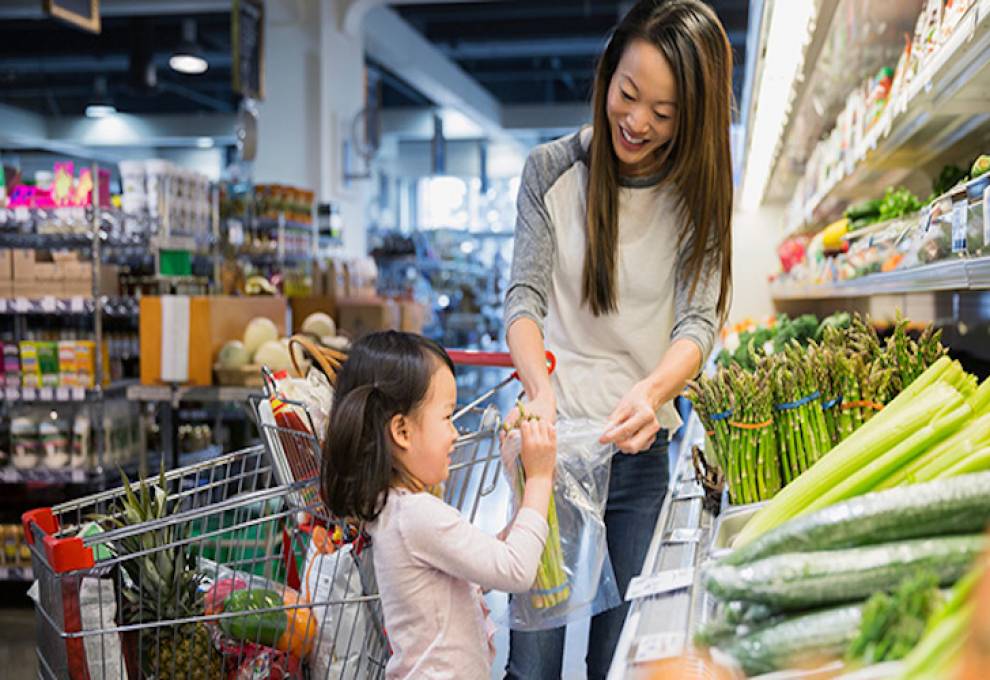
Our trends for 2021 have been developed to help better understand your customers and consumers. These are unique because we want to focus on your customers to ensure you know what will be important to them and what you can do about it.
1. The value of food has changed
The events of 2020 did force many people to pause and slow down. One result is that society placed a greater importance on essentials such as food, the people producing it and the people selling it. There were many examples of companies, associations and others in the food industry stepping up to provide food for Canadians. People have been thinking more about food and they value it differently, which is a good thing.
Suppliers need to make sure they are getting a fair price for their products. Costs have changed and you need to move along with them. Production, processing and inputs are costing more. If you have been able to keep supplying your customers and your costs have increased, you need to make sure you are continuing to generate the return required. Plant the seed now if you need to review costs in upcoming months.
2. Canadian and local products are in demand
The demand from consumers for Canadian products has increased. Retailers are also looking for more Canadian products because the service level should be better and they avoid currency fluctuations.
Food producers and processors should be doing a great job telling their story. On social media, on packaging and everywhere else. This is a big opportunity to increase trial and get listings. Make sure you do deliver on service level and send consumers to the store for your products.
3. E-commerce will continue to grow
There is more food being purchased online in Canada than ever. Most estimates put this between 12-15 per cent. In other words, one-eighth of food dollars is being spent online. As execution gets better and confidence grows in someone else picking your broccoli or apples, the convenience and safety of shopping from home will continue. When we get back to more movement and fewer restrictions stores will see people come back but e-commerce is here to stay and now that retailers have invested in it, they will want to see it work.
Producers and processors should explore the option of selling online. Obviously, the category or complexity of your products has a big impact. If selling direct to consumers is not realistic, think about how your product works for your retail partners in this environment. You should also review your customers’ websites to check that the photo is correct and to confirm the ease of purchase of your products.
4. Changing priorities for retailers
Your customers changed faster in 2020 than ever. The store environment is different, e-commerce is a major part of their business and in-stock position was much more important. There was more collaboration in the past year to get inventory to the right store than we have seen in years.
You need to evolve with these priorities and make sure your business is focused on them. Help consumers find your products in store with your messaging. They are not shopping categories like they used to. Review your items on your customer’s website to make sure they are there and work properly. They will not check every item. Report your service level to each customer and be proactive if you are going to have issues.
5. Consumers shop differently when they are working from home
The items consumers buy are different now. People are looking for something interesting and they actually eat breakfast at home. They are also eating leftovers and making lunch at home.
Provide ideas for consumers to use your products differently. We know they are getting tired of the same old recipes (aren’t we all?) so help them out. New options for breakfast will work in this new environment.
6. Millennials are shopping in grocery stores
We know prior to the pandemic, millennials would eat out more than any other generation. With reduced availability and people working from home they are now shopping in grocery stores. My opinion would be they make up a huge percentage of the increase we are seeing in retail sales. They are a big portion of the shift from food service to retail.
They are looking for restaurant quality in the grocery store and most are willing to pay for it. Yes, they will go back to restaurants when they open up again but not in the same numbers. If they ate out three times, perhaps now it will average 1.5 times per week. There are opportunities to satisfy their desire for products that are almost fully prepared. Make sure you leave some work for them so they can say they did it and customized it with their choice of sauce or spice.
7. Service level is key to your success
We are seeing consumers select a store based on their ability to get everything, even if it costs a bit more. One trip reduces their exposure in public. Retailers are very focused on service level to drive traffic and also to maximize the basket while they are in the store.
Increase the awareness in your business for service level and the importance of orders that are on time and in full. Talk to your customers about service level too. Report your numbers. Cases delivered divided by cases ordered is a simple calculation you can do to save them time. They will focus on the problems so if you have a good story to tell, make sure you tell it.
We hope these insights will help you plan and focus your efforts in 2021.
WHAT’S IN STORE?
Sobeys new premium private label
In the final quarter of 2020, Sobeys launched their new premium private label-Panache. They are investing to increase their sales of private label products and capture the more lucrative premium market segment.
You will see these items throughout Sobeys stores. Most retailers have several tiers of private label to meet the needs of different consumers. You should always consider if private label is right for your business. There is no right or wrong answer but you do need to think about it and have an answer if retailers ask you.
Peter Chapman is a retail consultant, professional speaker and the author of A la Cart-a suppliers’ guide to retailer’s priorities. Peter is based in Halifax, N.S. where he is the principal at SKUFood. Peter works with producers and processors to help them get their products on the shelf and into the shopping cart.

Add new comment